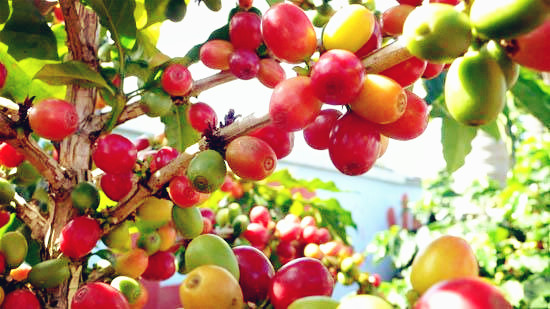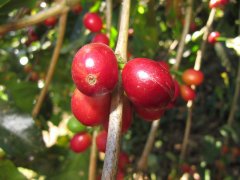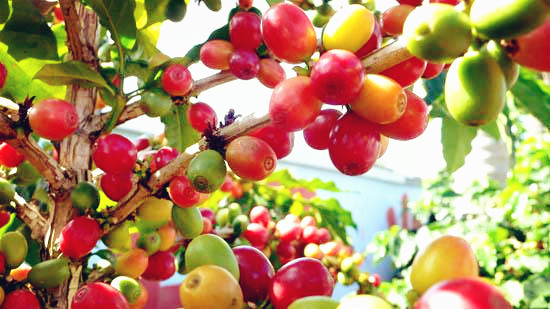Buy coffee beans Arabica beans Cardoba Cardoba Panama Borquet rose summer content Cupid SH
Panamanian coffee
The microclimate of the Panamanian highlands is the most important resource that makes Panamanian coffee unique. The most important resource that makes Panamanian coffee unique is its microclimate. The east-west environment of the Republic of Panama converges cold air over 6500 feet through the Central Mountains, creating a variety of microclimates in the Boquete and Volc á n-Candela regions, making it a major source of Panamanian coffee. These unique coffees are grown in nutritious and balanced land located in the Baru volcano region.
Planting environment
Panama is a small country located in the center of the American continent. The waters of the Atlantic and Pacific oceans flood its beaches.
Panama is located at 9 degrees north latitude, the meeting point of the Central Mountains, where Mount Baru, one of the highest volcanoes in Central America, is located.
The Baru volcano has an altitude of more than 11400 feet, and the land around it is rich in nutritious and fertile soil, providing sufficient conditions for the sowing and cultivation of coffee endemic to Panama.
The appropriate microclimate, soil, temperature and height of these highlands are suitable for sowing, planting and harvesting a variety of unique coffees. These coffees have jasmine, citrus, ripe fruit, berries, caramel, special sweetness, vanilla, chocolate and other flavors.
Unique coffee
Panamanian coffee is classified and numbered into small batches, which are designed to have a small capacity for optimal management, and classification numbers allow buyers to understand and track the entire process.
Because of its small quantity, Panamanian coffee products are based on special coffee. The country provides its high-quality products to specialized stores around the world, such as Denmark, Britain, Greece, Norway, Sweden, South Korea, Japan, Taiwan and the United States.
Panamanian coffee originated in 1780, when European immigrants introduced the first Tipica tree species. Located in Central America, with the natural advantages of sunshine, land and mountains, coupled with a sufficient working population, the region is an excellent area for growing and producing high-quality boutique coffee, and it is a paradise for coffee. In particular, Geisha coffee from Panama has led to a global trend of paying attention to boutique coffee, which has successfully attracted global interest in Panamanian coffee. Boquete is the oldest and most famous coffee producing area in Panama. It is located on the east side of Mount Baru and is a plateau with an average elevation of about 1000-2000 meters. Among them, "Baru Volcano National Park" (Volcan Baru National Park) is an ecological conservation area, which is very rich in biodiversity and has a variety of microclimates. In addition, it is shrouded in mist all the year round and abundant rainfall, which creates good local cultivation conditions, which makes Boguet coffee with a unique aroma and is the producing area with the highest output and the best quality of Panamanian coffee. Every harvest season, coffee farmers will use the refined method of washing and drying in the sun to make the raw beans full and pure flavor.
The Baru volcano is not only the highest mountain in Panama, but the sediments created by early volcanic activity and eruption bring a large amount of very fertile soil, which is rich in nutrients, especially rich in phosphorus and sulfur, mixed with clay and unique climate patterns, making the region a suitable environment for the growth of high-quality coffee. Dense forests and a large number of species form the overall biodiversity.
About 50 coffee farmers here form a small cooperative, all of which produce coffee in the traditional way of Bogut-allowing it to grow in a near-natural environment. Although the yield is not high, it can maintain a rich ecological environment, and soil quality can be maintained or even improved. The natural planting method is not only beneficial to the environment, because the coffee fruit grows slowly, so it is easier to grow high-quality coffee beans with good flavor. Farmers harvest complete coffee berries by hand and send them to nearby Cafe de Eleta S.A. For post-processing, the treatment plant is about 4 kilometers away from the farm, and a modern laboratory is set up for cup test tube and manual screening.
Panama Volcan Baru Series Cupido
Country: Panama
Grade: SHB
Producing area: Baru Volcano
Altitude: 1600-1650m
Annual rainfall: 3500 mm
Treatment: honey treatment and traditional washing
Variety: Kaduai, Kaddura, 30% Rose Summer
Harvest year: 2015
Raw bean specification: 17-18 mesh
Flavor: White grape, caramel, honey, black tea

Important Notice :
前街咖啡 FrontStreet Coffee has moved to new addredd:
FrontStreet Coffee Address: 315,Donghua East Road,GuangZhou
Tel:020 38364473
- Prev

China Coffee Network recommends Brazilian coffee imported Brazilian flavor Bourbon Brazilian flavor blended coffee
Brazilian coffee Brazilian coffee refers to coffee produced in Brazil. There are many types of Brazilian coffee, most of which are unwashed and dried. They are classified according to the state of origin and port of shipment. Brazil has 21 states, 17 of which produce coffee, but four of them produce the most, accounting for 98% of the country's total production. Brazilian coffee has a low acidity in its taste,
- Next

China Coffee Network American Coffee Bean El Salvador Manor Micro-batch Water washing Palamara SHB
El Salvador is located in Central America, bordered by Guatemala and Honduras in the north, and the Pacific coastline in the west and south. El Salvador is the smallest country in Central America and the most densely populated country in Central America. Although the territory of El Salvador is small, it has dozens of volcanoes. It is the country with the highest density of volcanoes in the world, so it is called the country of volcanoes. Full
Related
- Does Rose Summer choose Blue, Green or Red? Detailed explanation of Rose Summer Coffee plots and Classification in Panamanian Jade Manor
- What is the difference between the origin, producing area, processing plant, cooperative and manor of coffee beans?
- How fine does the espresso powder fit? how to grind the espresso?
- Sca coffee roasting degree color card coffee roasting degree 8 roasting color values what do you mean?
- The practice of lattes: how to make lattes at home
- Introduction to Indonesian Fine Coffee beans-- Java Coffee producing area of Indonesian Arabica Coffee
- How much will the flavor of light and medium roasted rose summer be expressed? What baking level is rose summer suitable for?
- Introduction to the characteristics of washing, sun-drying or wet-planing coffee commonly used in Mantenin, Indonesia
- Price characteristics of Arabica Coffee Bean Starbucks introduction to Manning Coffee Bean Taste producing area Variety Manor
- What is the authentic Yega flavor? What are the flavor characteristics of the really excellent Yejasuffi coffee beans?

